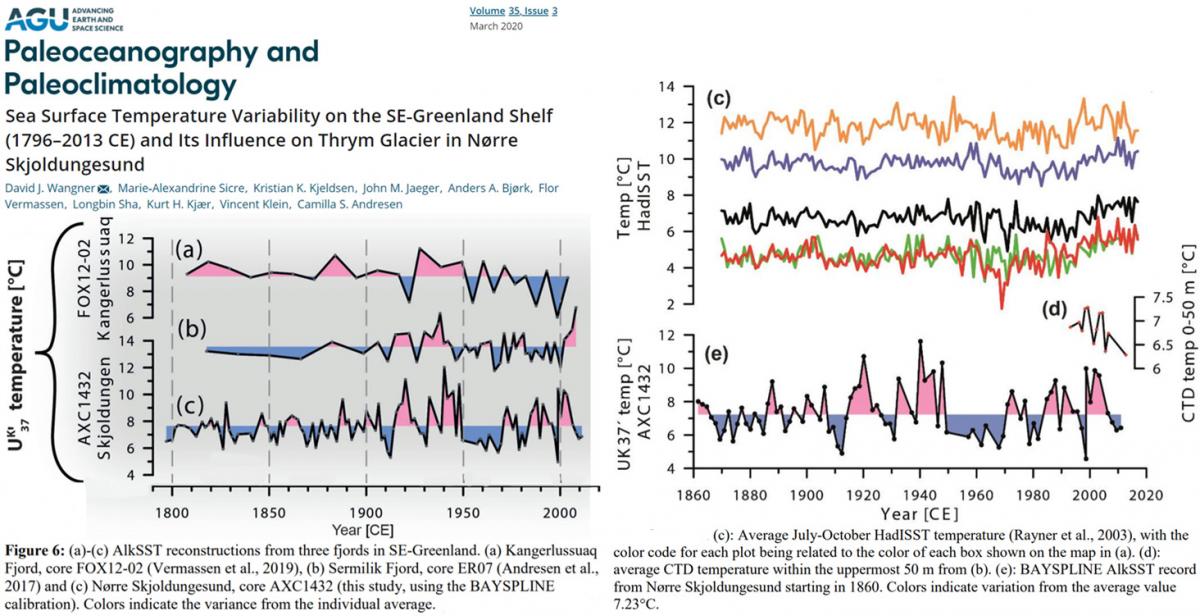It sems HH Lamb was probably correct as far as how warm it was in the 1930s. He lived through the 1930s and was actively researching climate – in the past as well as in his own time. At https://notrickszone.com/2020/04/06/a-new-1796-2013-greenland-reconstruc… … we have a new study that shows greenland temperatures were warmer in the period from the 1920s to 1940s than they are today. It used data from 1796 to 2013, Wangner et al at https://doi.org/full/10.1029/2019PA003692 …. At the beginning of the global warming saga it was recognised the 1930s were warmer than the 1990s but the data was changed and the mantra fell off a cliff. No surprise there. Jiggery pokery all round. Now, Wangner et al have brought the data back to life. Resuscitated it you might say. There is also no sign of a hockey stick apparently. I wonder why. Actually, you only have to read a book by HH Lamb to know it in any case – but he has been airbrushed out of climate science in spite of having set up the climate research centre at the University of East Anglia (in Norwich) prior to global warming palpatations. See the graph below …
 …
…
Meanwhile, at www.plateclimatology.com/further-proof-el-nios-are-fueled-by-deep-sea-ge… … further evidence El Nino events are fueled by deep sea geological heat flow. They point a finger at hydrothermal vents on the floor of the Mariannu Trench in the western Pacific Ocean. They emit large amounts of chemically charged and super heated water into the overlying ocean water column. Recent El Nino events were created, and maintained, even restarted again when flagging not just by heat flow from vents but from other geological processes as well. This implies that El Nino events are natural phenomena that have been apprehended as evidence by climate change advocates. What exactly drives El Nino events has been controversial for some time – in spite of the fact that they go way back into prehistory. Not only are deep sea vents providing lots of heat to the bottom and middle ocean but so too are submerged volcanoes and earthquakes on deep sea fault zones. In other words, the ocean conveyor belt system is set into motion by these geological processes, moving heat from the Pacific into the Indian and Atlantic oceans.
